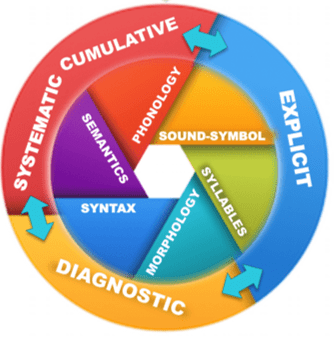We think it’s fair to say that the word “IEP” creates a bit of anxiety for most parents and teachers alike. That’s because these three letters are central to the educational experience of any child who learns differently. An IEP is a student’s Individualized Education Program, and it outlines the plan for specialized instruction, supports, and services a child needs to make progress and thrive in school. As such, IEPs are crucially important to both parents and teachers alike. That’s why they work together at least once a year to update and revise a child’s IEP to ensure that he or she will receive an appropriate and individualized learning experience.
Given how important IEPs are, they can feel overwhelming to both parents and teachers. That’s why Braintrust CEO and Co-Founder, Mara Koffmann, was so excited to speak IEPs with pro Stephanie DeLussey, creator of Mrs. D’s Corner and the Intentional IEP. Listen to their conversation below and read on for key takeaways from their discussion.
Key Takeaways
According to IDEA, the Individuals with Disabilities Education Act, every child is entitled to a free and appropriate public education, aka FAPE. A students’s IEP (Individualized Education Plan) is what gives students with special needs, disabilities, and differences access to the general education curriculum. The goal of IDEA and FAPE is always to place students in the least restrictive environment (LRE), and a student’s IEP helps to make this possible.
The first step towards receiving an IEP is an evaluation. This is the process by which a doctor identifies disabilities and differences in the way a child learns or thinks. Once a student has been diagnosed with a disability, he or she is eligible for an IEP. And the results of each evaluation are valid for three years.
IEPs are updated annually. Teachers, service providers, and parents attend IEP meetings as a team to review and revise a child’s goals, progress, and supports. Anyone on the IEP team has the right to request additional meetings if necessary.
Stephanie’s top tips for parents navigating the IEP process:
Make sure you are an equal member of the IEP team! Your opinions, thoughts, and concerns should be a part of the discussion at each meeting.
Know your rights! Wrightslaw is an incredible resource for parents, educators, and advocates to learn about special education law and advocacy for children with disabilities.
Ask what you can do at home to support your child! Learning and growth happens in school and outside of the classroom. The more that you can do to reinforce skills and goals at home, the more progress your child is sure to make. And if you aren’t sure where to start, don’t be afraid to ask for help! Your child’s school is likely a great resource and one you should take advantage of. Plus, you can reach out to a parent training center for additional support and guidance.
It’s important to set realistic IEP goals. Learning is a process. Seemingly simple goals are actually made up of countless steps, and each one builds upon the one before it. With that in mind, parents should work with their IEP team to understand the stepping stones for each goal on their child’s plan. That way, the team can work together to achieve incremental growth and build meaningful momentum.
Stephanie’s words of wisdom for teachers who have to manage IEPs:
Plan ahead for IEP due dates! You’ll be less stressed and better prepared if you’ve got your deadlines mapped out. Stephanie recommends adding all of your IEP due dates to your calendar at the beginning of the school year, so you can more easily prioritize your endless to-do list. The life of a teacher is a constant juggling act, and this bit of planning should make things slightly less stressful!
Share drafts of IEPs with parents at least a week before an IEP meeting! This will help them to prepare and offer feedback, and make for a more productive conversation as a team at the meeting. Just be sure to label the document as a draft, and give parents a heads up that you are passing it on.
Include parents in the process! Whether it’s a phone call, a Google form, or a questionnaire, it’s important to empower parents as active members of the IEP team. Remember, they know their child best. Accordingly, they can help you make an even better IEP for your student.
When it comes to data collection, keep it simple! Stephanie’s preferred tools are good old post-its, paper, and pencils. You can learn more about her recommended strategies on Mrs. D’s Corner and The Intentional IEP.




